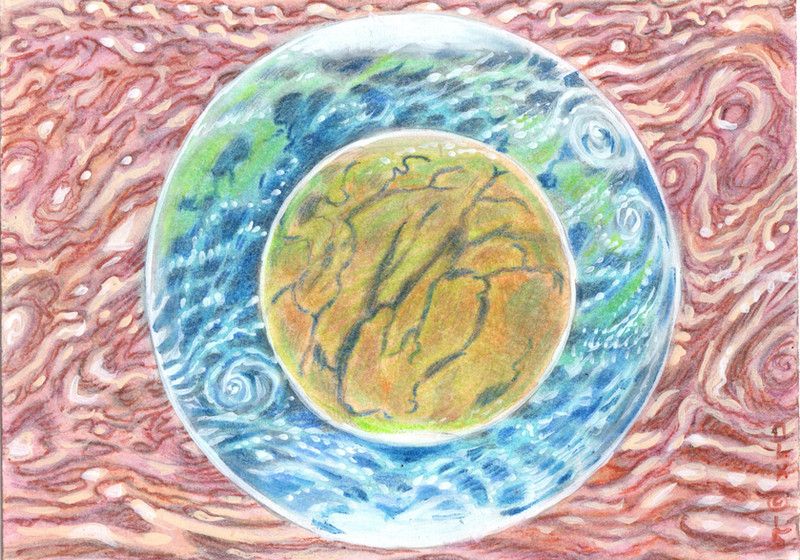HOME | DD
 LEXLOTHOR — Moon Gems
LEXLOTHOR — Moon Gems

#astronomy #jovians #moons #planets #spaceart #extrasolarplanet
Published: 2015-10-13 16:06:10 +0000 UTC; Views: 745; Favourites: 21; Downloads: 6
Redirect to original
Description
Further explorations into the unknown can be seen in my DA "Space Art" gallery:
lexlothor.deviantart.com/galle…
I have recently gone on a binge of speculations on the possibility of having a habitable earth-like world in orbit about a gas giant. Please follow the links below to see some of these other images.
I have always been impressed by the NASA photos of the Galilean moons of Jupiter passing in front of the disc of the Solar System's largest planet. There is a surreal quality to seeing a moon with a vast cloud pattern as a backdrop instead of the blackness of space.
In this image I imagine two terrestrial moons of an extrasolar gas giant in conjunction. For the sake of argument let us assume that we are seeing a telephoto image that compresses the apparent distance between bodies. A moon cannot be too close to a jovian world otherwise its surface would be fried by radiation from the parent body. For instance the surfaces of three of the four larger moons of Jupiter receive doses of radiation that would be lethal to humans. For the foreseeable future humans will only be able to safely land on Calisto the outermost of the four.
In this scenario I have presented a beautiful Earth-like mostly water world in orbit about a gas giant. In the background we see about five degrees of latitude of the equatorial bands of the gas giant's atmosphere. It is about half again more massive than the Earth. It generates a strong magnetic field that helps to shield it from radiation from its parent planet and parent star. Passing in front of the blue moon is a Mars sized moon that also supports life. Although its own magnetic field is weak, it orbits the giant imbedded inside its huge magnetic field. This shields its atmosphere from being stripped away by the solar wind.
In order for these moons to be at the triple point of water, the giant has to be orbiting within the goldilocks zone of its star. It has drifted inward from the ice line over billions of years, bringing its "children" to life. This giant orbits in close to a K-star and has an orbital period of about nine Earth months. Its moons are in whole integer orbital resonance with the orbit of the giant and with each other. The blue moon Pacifica completes nine revolutions about the giant planet Maia for every solar orbit of its parent. The smaller moon Savannah accomplishes only three "days" per solar year.
This means that Pacifica's day (sol) is thirty Earth-day's long. The sol of Savannah is ninety earth days long. This would lead to vegetation and marine communities adapted to very long periods of twilight. Their night sides would still be illuminated by reflected light from Maia that would be so bright that midnight would be no darker than dawn or dusk. True dark nights only occur when each moon passes into the shadow of Maia. Light intensity on these habitable worlds would follow two superimposed sinusoidal curves.
Travel between these two moons would be fairly easy. Hohmann minimum energy launch opportunities from Pacifica to Savannah would occur once every 33 Earth days. It would take only a week to reach Savannah using Apollo level technology. Imagine what it would be like if the Earth-Mars round trip travel time could be measured in weeks rather than years!
art & text (c) John P. Alexander
2.5" x 3.5" art card rendered in Prismacolor pencils, Prismacolor & Tombow markers & acrylic paint


























